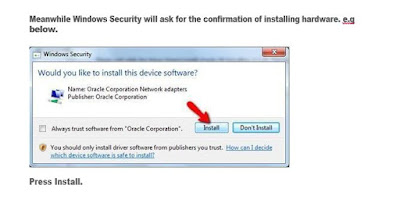1.
Virtual Box – An Introduction
VirtualBox
is a powerful x86 and AMD64/Intel64 virtualization product for enterprise as well
as home use. Not only
is VirtualBox an extremely feature
rich, high-performance product for enterprise customers, it is also
the only professional solution that is freely
available as Open Source Software under the terms
of the GNU General Public
License (GPL) version 2.
When we describe
VirtualBox as a "virtualization" product,
we refer to "full virtualization", that is, the particular kind
of virtualization that
allows an unmodified operating system
with all of its installed software to run in a special environment, on top of your existing operating system. This
environment, called a "virtual machine", is created by the
virtualization software by intercepting
access to certain hardware components and certain features.
The physical computer
is then usually called the "host", while
the virtual machine is often
called a "guest". Most of the guest code
runs unmodified, directly on the host computer, and the guest
operating system "thinks" it's
running on real
machine.
Learn more at https://www.virtualbox.org/
Now we will start
Installing Virtual Box in Windows, to install Ubuntu as a virtual machine.
2.
Installing VirtualBox
You can download VirtualBox version 4.2 from the following link. This version
is old one but proved to be more stable as compared to the latest one.
https://www.virtualbox.org/wiki/Download_Old_Builds_4_2
After Download
complete of latest version VirtualBox 4.3.26, click on downloaded exe.
Step1: Following the Welcome screen will appear.
Step3: Custom
Setup for different features Window is displayed. No need to change
anything, just press the “Next” button.
Step 4: The Warning window is displayed. Click Yes.
Step5: “Ready to Install” window is displayed.
Press the “Install” button.
Step6: Finally after setup,
installation will start
and following window
will be displayed with a status bar.
Meanwhile, Windows Security will ask for the
confirmation of installing hardware. e.g below.
Press Install.
Step7: Installation Complete. Press the “Finish” button.
After installation
completed, you can find its icon on the desktop.
- Please submit screenshots of your installation steps. you are instructed to create only one word file and paste all screenshots as shown above of your computer and submit that file by Click on this Submission link











Post a Comment